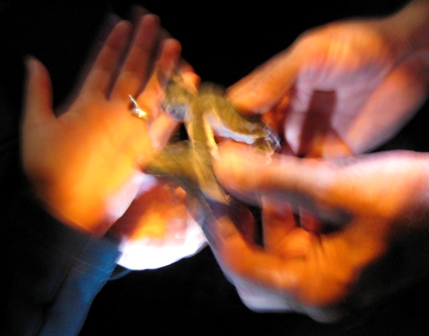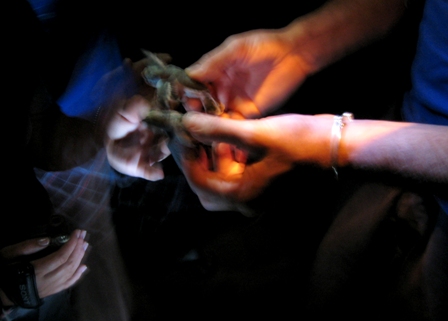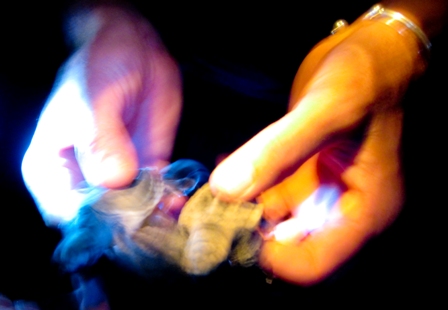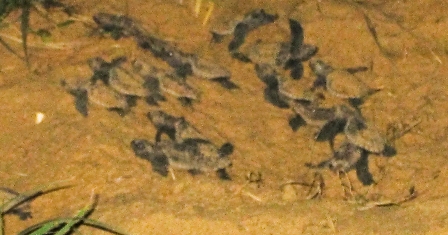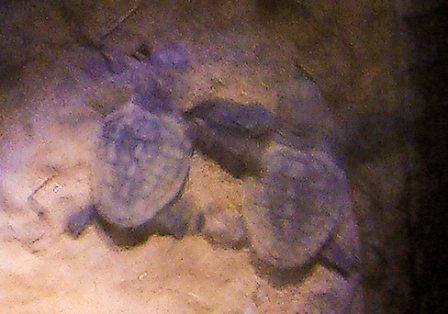 |
|||||||||
|
|
|
|
|
|
|
|
|
|
|
|
|
|
|
|
|
|
|
|
|
|
|
|
|
|
|
|
Bundaberg,
Australia (Steph) Tonight we visited Mon Repos, a protected sea turtle rookery near Bundaberg. From November through May, sea turtles make their way up the beach and dig out holes in the sand where they lay their eggs. The hatchlings burst forth out of the sand about eight weeks later. It being near the end of the season, we were fortunate enough to help some loggerhead turtle hatchlings work their way down to the sea.
Mon Repos is monitored by scientists and park rangers, so they accompany visitors to the egg nests, explaining the turtles’ life and reproduction cycles. Scientists believe that sea turtles live to be 300-400 years old. One out of every thousand hatchlings will survive to adulthood, and they don’t reach reproduction age until they are 35 years old. When the hatchlings venture out to sea for the first time, they won’t touch land again until they are at least 10 years old. They are swept out into ocean currents, and stay in remote areas of the ocean until then, trying to avoid predators like sharks and birds.
Knowing all this, it was an amazing experience to see these little turtles bursting forth from the sand and making their way down to the ocean. They were about the size of a deck of cards, fins and all. As they came forth from the sand, the rangers gathered them into a pen. The rangers swept away sand from the underground nest, helping the tiny hatchlings surface faster.
When all of the hatchlings had been collected, the rangers came around with a few of them so we could get a look up close. The hatchlings are so focused on their goal of swimming out to sea that they constantly make little swimming motions with their fins. It was humbling to feel the press of their tiny fins against my fingertip, knowing that those fins could grow to an enormous size and live for hundreds of years. But only if this particular little turtle survives its first 10 years, and its chances are not good.
The rangers then had those of us with flashlights form a line heading directly down to the water’s edge. The turtles’ instinct tells them to go toward the lowest and lightest point on the horizon, which is generally the ocean. Lights from seaside homes and campsites can disorient the hatchlings, so we formed a steady stream of light that led straight to the water. Warren and I both had flashlights, so we were lucky enough to be part of the chain. With our feet spread a few feet apart, the hatchlings quickly ran down to the waterfront. There were about a hundred of them, and seeing them run between my feet and occasionally tickle my toes was delightful. After they’d all passed under my legs, I was able too go down to the waves and watch them as they swam out to sea. It was a truly magical evening.
|
|
|
||||||||||
|
|
 |
|
 |
|
 |
|
 |
|
 |
|
|
|
||||||||||
|
|
||||||||||
|
|
||||||||||
|
|
||||||||||
|
|
||||||||||
